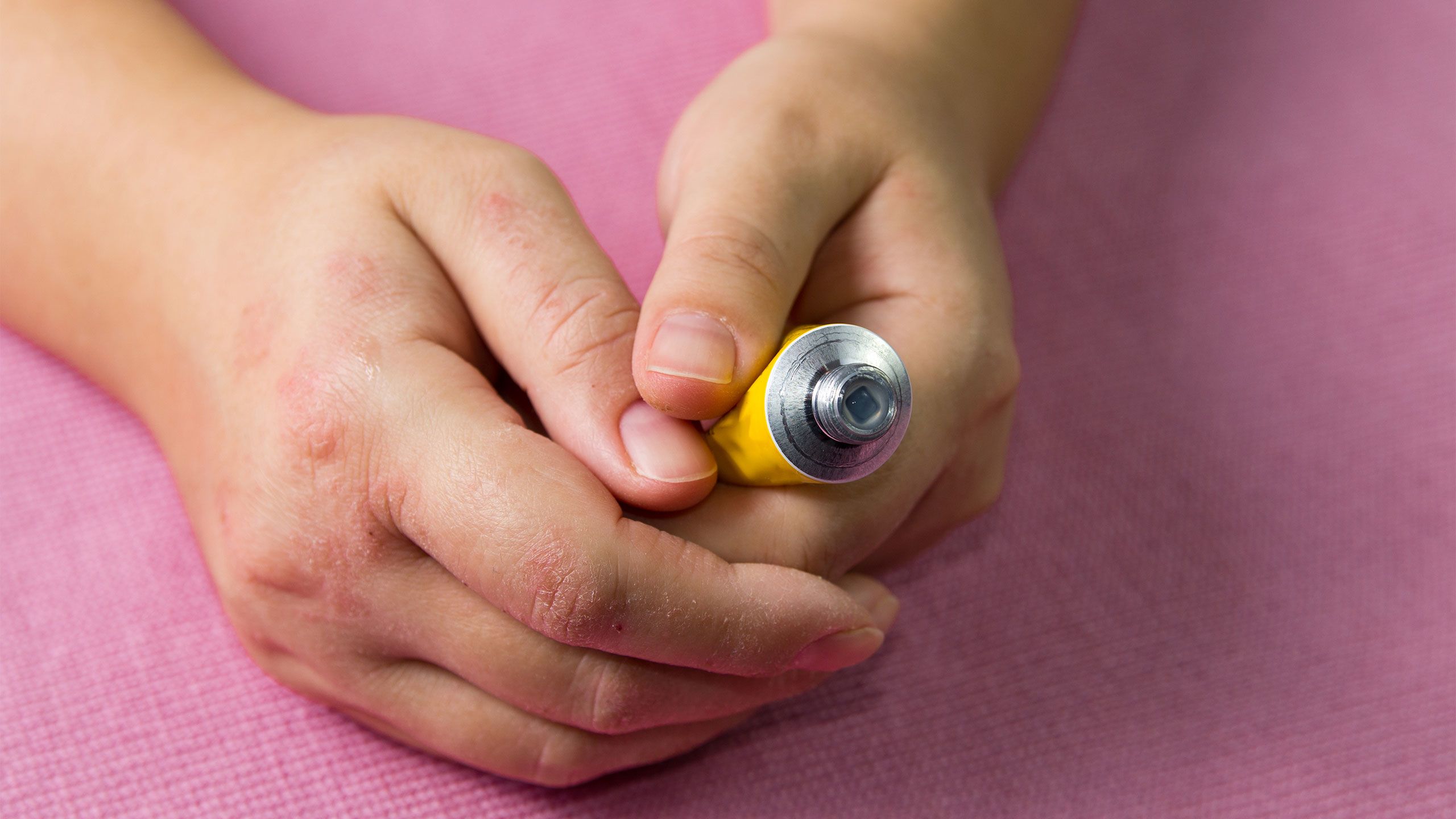Atopic dermatitis, often referred to as eczema, is a common skin condition that affects people of all ages. It is most common in young children, though many teens and adults also have atopic dermatitis. Itching is the most common symptom, and can be intense and distressing—atopic dermatitis is sometimes called “the itch that rashes.” This often results in scratching that leads to other symptoms like irritation, flaking, redness, bumps, and infection.
Treating atopic dermatitis involves avoiding triggers, following a skincare routine that includes moisturizing, and for many patients, using therapies prescribed by a healthcare provider. Because atopic dermatitis often affects people at a young age, many patients need the help and guidance of a parent in order to learn how to manage and prevent symptoms. Here, we’ll look at a few routines and habits that parents can help children establish at a young age when managing atopic dermatitis.
Bathing and moisturizing
Regardless of a person’s age, establishing good habits around bathing and moisturizing are essential to an atopic dermatitis treatment plan. The basic guidelines are:
- Bathe once a day. Bathing helps add moisture to the skin. It also helps remove dead skin, irritants and allergens.
- Avoid hot water, which can dry out the skin and aggravate symptoms. Instead, opt for lukewarm water.
- Limit time in the water to 5 to 10 minutes.
- Use gentle, unscented soaps and cleansers, and check the ingredients on any product that your child uses on their skin—even products marketed as natural or organic can contain ingredients that may irritate the skin.
- Apply an emollient moisturizer to the whole body within three minutes after a bath or shower has ended.
- Follow the pediatrician’s instructions for when and how to apply topical medications, which may also need to be applied after bathing.
Additionally, you may want to talk to your child’s pediatrician about using bleach baths, oatmeal baths or wet wraps, which are helpful to some people with atopic dermatitis. It’s always a good idea to check with your child’s pediatrician before introducing new elements into a skincare routine.
Trimming fingernails
Keeping a child’s fingernails clipped can help reduce damage to the skin when scratching, and also reduce the risk of infections.
Medications
There are a number of different medications that are used to treat atopic dermatitis. Some are topical treatments, which are applied to the skin. Others are taken as oral medications, and some are taken as injections. Regardless of the type of therapy a child is prescribed for atopic dermatitis (or any other condition), it is important to establish good habits around using medications, including taking medications as directed by a healthcare provider and adhering to a treatment schedule. It’s also important that children and teens understand that medications can be overused. For example, overusing strong topical steroids can cause thinning of the skin.
Tracking symptoms
For children who are very young, parents are encouraged to keep a diary that tracks symptoms. Children who are old enough to read and write should be encouraged to keep their own diary. Keeping track of symptoms can be very helpful when deciding if a particular treatment is working, identifying patterns in symptoms, and identifying triggers. Keeping a diary may also help give a child a sense of control over the condition.
Sleep
Sleep is an important aspect of overall health for people of all ages. Unfortunately, sleep disturbance is common among children with atopic dermatitis. Help your child establish consistent bedtime routines and healthy bedtime habits, such as going to bed at the same time every night (even on weekends), limiting screen time and light exposure in the hours before bed, and keeping the bedroom dark and quiet.





